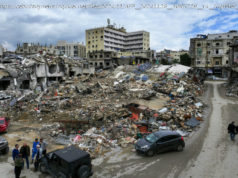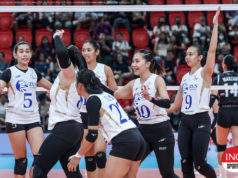Puerto Rico has experienced an island-wide blackout, seven months after Hurricane Maria hit the island and devastated much of its infrastructure. Every
Puerto Rico has experienced an island-wide blackout, seven months after Hurricane Maria hit the island and devastated much of its infrastructure.
Every single power customer on the U. S. territory is without power, NPR’s Adrian Florido reports from San Juan. More than 3 million people are affected. It’s the first total blackout since Hurricane Maria.
PREPA, Puerto Rico’s electrical utility, says a fault was detected on a transmission line between two power plants and that service will be restored gradually. It could take 24 to 36 hours for power to be restored for some customers, the utility says. Hospitals, the island’s main airport, water pumping systems and banking centers will receive priority as PREPA works to restore service.
« In San Juan, officials said a Major League Baseball game between the Minnesota Twins and the Cleveland Indians would go on as scheduled Wednesday evening, » Adrian reports. « They said the Hiram Bithorn Stadium had been equipped with generators capable of powering every part of the venue for up to 48 hours. »
This is the first complete blackout since the hurricane, but over that seven-month span, the island had never restored full service. Before this blackout began, The Associated Press says, 40,000 people in Puerto Rico still had not regained « normal electricity service. »
And even areas that have had power restored continue to experience periodic outages.
In February, an explosion at a power substation plunged San Juan back into darkness. Earlier this month, a tree fell on a transmission line and cut power to more than half the island’s population, as Adrian has reported:
« The accident occurred in the region of Cayey, where crews were working to restore power to people still waiting nearly seven months after Hurricane Maria. Increasingly, that work requires clearing away heavily forested mountainsides to gain access to the large utility poles that carry transmission lines from one mountain peak to the next.
« It was during that kind of work that a tree falling toward the ground made contact with the power line instead….
« In some places that have had their power back for months, like the capital, San Juan, the outage was a humbling reminder that the restoration is not yet complete in more remote parts of the island, and that one mistake still has the ability to ripple back to the island’s most populated centers. In places that only recently got their power back, the outage was a frustrating, if not totally surprising, setback. »
Why is it so hard for power to be restored in Puerto Rico? As Tim Webber reported for NPR last fall, the island is struggling with an « outdated, aboveground power grid » that has lagged behind infrastructure improvements in the rest of America.
« Puerto Rico’s debt crisis has prevented much-needed improvements to power plants that are more than a half-century old, » Tim wrote. PREPA is in debt, and Puerto Ricans pay higher electricity rates than most people on the U. S. mainland despite having frequently interrupted service.
After the storm, damage to communications and transportation infrastructure, and a comparative lack of utility workers, have hampered power-restoration efforts.
Last month, Adrian reported that people in the mountains of Puerto Rico are frustrated and angry with the uncertainty they’ve lived with for months — not knowing when the power will come back.
Lt. Col. John Cunningham, second-in-command of the U. S. Army Corps of Engineers’ power restoration effort at the time, told Adrian the work has become less predictable.
« All the low-hanging fruit has been, you know, frankly, accomplished at this point, » he said. « We’re down to the very, very challenging terrain, and the lines are very, very long spans. It’s requiring helicopters and then a lot of manual work. »
Linemen told Adrian that the work was far more complicated than similar work in the U. S., because of the terrain — and because six months’ worth of vines have been growing over the fallen lines.
Adrian says that Puerto Rico’s government is hoping to finish up power restoration « before the next hurricane season begins » — about a month and a half from now.






